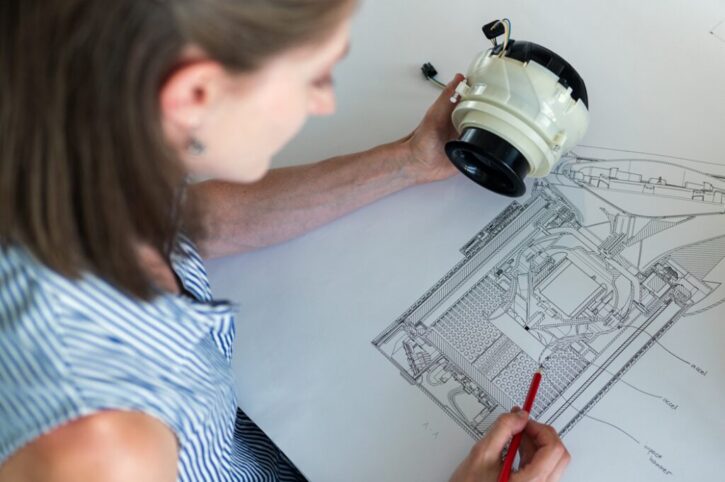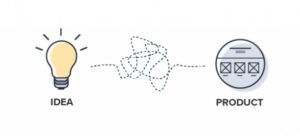
Source: makodesign.com
Inventive thinking means using your imagination and creativity to come up with new ideas or solutions that can be turned into tangible inventions. These creations often start as simple concepts in our minds but have the potential to revolutionize our lives in significant ways. Think about the influence of inventions like smartphones, electric cars, and the internet.
Understand the Problem
To start, you need to understand the problem you want to solve or the need you aim to fill. This is the crucial first step in the inventive process. Focus on identifying a specific issue that requires a new or improved solution. Often, the most groundbreaking inventions come out of simple, everyday problems. For instance, Alexander Graham Bell saw the need for a more efficient form of long-distance communication, which led him to invent the telephone. Similarly, Jonas Salk aimed to solve a dire health crisis, leading to the creation of the polio vaccine. Both of these inventions addressed specific, pressing problems that had a huge impact on society.
Research Existing Solutions

Before you leap into the problem-solving phase, it’s essential to research existing solutions to the problem you’ve identified. This step helps you avoid wasting time and resources on something that’s already been solved. Make it your mission to become an expert on the subject. Examine what’s already out there and identify the limitations of current methods. If you find that your problem has been adequately addressed, it might be wise to turn your attention to another challenge. However, if you find gaps or areas for improvement, you’ve set the stage for your invention. To gain a thorough understanding of existing solutions, consult a variety of resources like libraries, online databases, and industry-specific journals.
Brainstorming Techniques
Brainstorming is a creative process that helps you generate a variety of ideas that could potentially solve the problem you’ve identified. Several techniques can help you think outside the box. For example, “free writing” involves setting a timer and writing down as many ideas as you can without stopping to think or judge your thoughts. Another technique is the “SWOT analysis,” where you evaluate the Strengths, Weaknesses, Opportunities, and Threats related to your idea. There’s also the “six thinking hats” method that encourages you to consider your idea from different perspectives, like emotional, logical, and creative. Using a combination of these methods can help you create a robust list of potential solutions.
Mind Mapping

Mind mapping is a useful tool for organizing your thoughts and brainstorming ideas. To create a mind map, start by writing the problem or goal in the center of a blank page. Then, draw lines outward from this central point, each representing a sub-topic or related idea. Connect additional lines to your sub-topics to add even more layers of related concepts. This visual representation can help you see the relationships between different aspects of your problem and potential solutions. By providing a clear structure, a mind map can assist you in focusing your ideas and identifying areas that might need more research or development.
Collaborative Thinking
Working with others can give your inventive process a fresh perspective. People from different backgrounds bring unique approaches to problem-solving. Organize brainstorming sessions, seek advice from experts in the field, or simply discuss your ideas with friends and family. Collaboration can lead to new insights and even help you find shortcuts to solve your problem. While the invention may be your brainchild, the input from others can significantly enrich its development. This website offers various platforms where you can connect with like-minded individuals or experts who could provide valuable insights into your invention.
Keep an Idea Journal

Keeping an idea journal can play a pivotal role in your inventive journey. Whenever an idea comes to mind, jot it down immediately. It’s easy to forget ideas that come at random moments, so make it a habit to carry a small notebook or use a note-taking app on your phone. Your journal doesn’t have to be perfectly organized; its primary purpose is to capture your thoughts as they come. Periodically review your notes to see if any ideas could be combined or improved upon. The journal will serve as a reservoir of inspiration when you need it.
Prototype Development
Developing a prototype is essential because it brings your idea into the physical world. A prototype is a basic version of your invention that lets you test and refine your ideas. It can be as simple as a sketch or as complex as a working model. The main aim is to identify flaws, make improvements, and get a better sense of how your invention will function in real-world conditions. This tangible form of your idea allows you to see its potential and what needs further work, getting you one step closer to a finished product.
Embrace Failure

It’s crucial not to fear failure as you navigate the inventive process. Failure is often the stepping stone to success. Many famous inventors faced setbacks and disappointments before their inventions became successful. Thomas Edison famously failed many times before he successfully invented the light bulb. Rather than viewing these experiences as defeats, he saw them as lessons. When something doesn’t go as planned, analyze what went wrong and why. Then, use more information to make your idea better. In this sense, each failure is actually a step toward perfecting your invention.
Protect Your Invention
While working on your invention, it’s also vital to think about how to protect it legally. Intellectual property rights like patents, trademarks, and copyrights can offer this protection. A patent provides you with exclusive rights to your invention, preventing others from making, using, or selling it without your permission for a certain period, usually 20 years. Trademarks protect the names or symbols associated with your invention, while copyrights safeguard any original written or artistic aspects.
Conclusion
Inventive thinking involves a series of steps starting from understanding a problem to finally creating a viable solution. Along the way, tools like brainstorming, mind mapping, and collaborative thinking can help generate and refine your ideas. Keeping an idea journal can provide ongoing inspiration, while prototypes make your concept tangible. Embrace failure as a learning experience, seek valuable feedback, and don’t forget to protect your intellectual property. Now, you’re well-equipped with the knowledge and tools to turn your inventive ideas into groundbreaking inventions.








